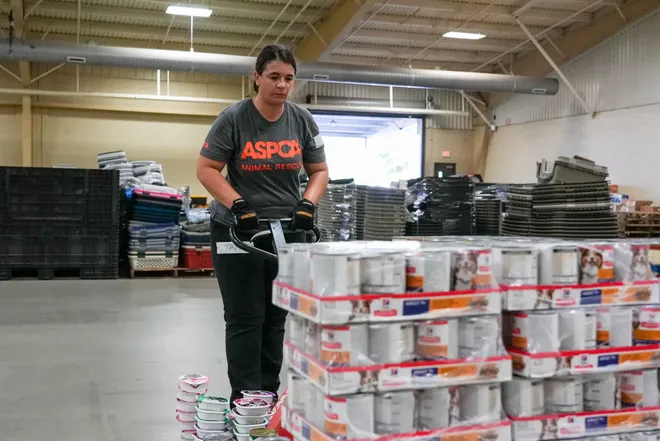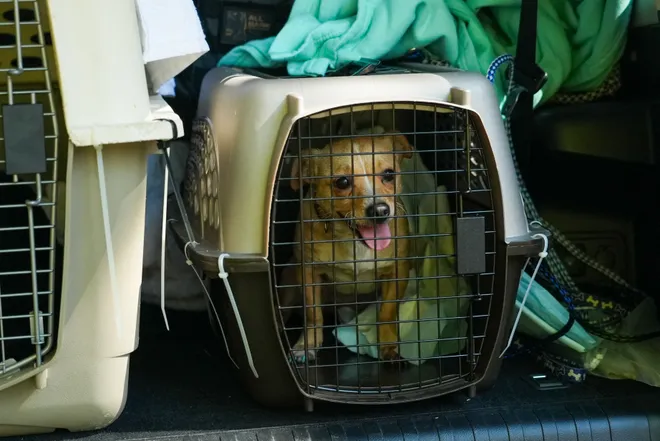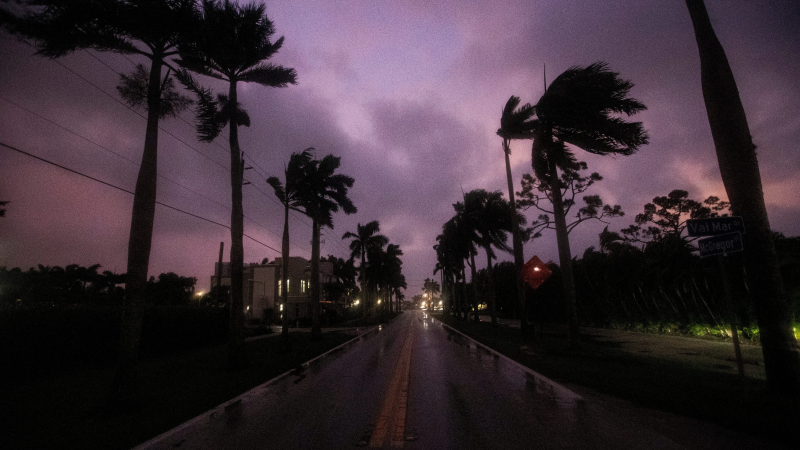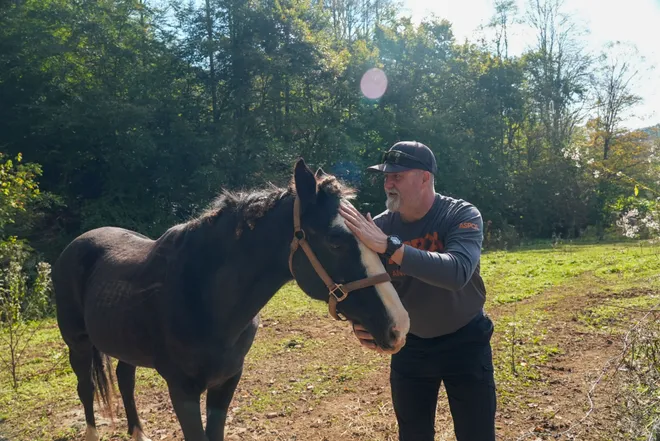'Do not do this': Dog tied to fence as Hurricane Milton advances highlights pet danger
As Hurricane Milton starts to make landfall on the Florida coast, concerns for the welfare of people and animals alike have flooded online platforms and forums.
Amid the many posts discussing what people plan to do to keep themselves and their families safe, one went viral Wednesday afternoon as an example of what not to do.
Posted on the Florida Highway Patrol-Tampa X, formerly Twitter, account, the video shows police approaching a dog that had been tied to a fence near Interstate 75 in Tampa. In the clip, an officer approaches the dog, who is standing in already stomach-high water. When the pup growls in fear, the officer can heard saying "It's okay" and that they "don't blame" the dog for being upset.
"Do NOT do this to your pets please," said the post's caption. Gov. Ron DeSantis reposted the video as well, saying "It is cruel for anyone to leave a dog tied to a post in the middle of an oncoming storm. FL will hold anyone who mistreats pets accountable."
Watch the rescue here
Other posts online have shown people debating the best practices for animal safety as Milton rapidly approaches. In one post on X, a horse owner showed themselves painting their phone number on the side of their horses' bellies so they can be reunited once the storm passes. Others in the comment section said they were braiding name tags in their horse's manes with contact information.
"Lot of people not understanding this the standard protocol and the BEST way to give your horses a chance in a natural disaster," said X user @adversewitness. "Let them go and they’ll find higher ground. It’s not cruel. Cruel is leaving them in a fenced pasture to drown."
For many animal lovers, it's almost impossible to imagine having to leave anyone behind. But, in some situations, the severity of the conditions, lack of resources, tight timeframes or serious safety risks can force people to make extremely tough, split-second decisions.
Prepare what you can

"Preparation is really key," Jessica Johnson, senior director of the Humane Society of the United States’ Animal Rescue Team told USA TODAY. "Especially if you live in an area that is prone to disasters or hazardous events, having a plan and preparation is truly key."
If you live in a high-risk area or are in the path of any potential weather event or disaster, you should assemble a pet preparedness kit in advance, she advised. Ideally, this should include all veterinary and vaccine records sealed in a waterproof bag, pictures of your pet in case you become separated, any necessary medications, a crate, carrier or harness and leash and a few days' worth of fresh water and food.
You can also take stock in advance of places for your pet to go if you cannot take them where you're going.
"Contact your Animal Services, your disaster services locally in your community and there might be somewhere where you can take them that is offering temporary boarding. It might be a higher ground, it might be, sometimes they open up a fairground or a farm."
However, she said, there is the reality of a last-second emergency that may not allow much time for organizing what you need.
"If, you know, the water is rising, then you do what you need to do," she said. "Just get yourself out and grab your pet, grab whatever you can to keep yourself safe and get out. And then I recommend going to or calling animal services or an emergency operating center that might have the food, leashes and crates and all that for you. If you weren't able to leave with that, there are resources that can help."
Tips for small animals

"For our small, animal friends, our recommendation is to bring them with you," Johnson said. "If you're not able to bring them with you, contact your local animal service or emergency department to see if they're setting up a temporary shelter or to see if there is a place that you could temporarily board your animal."
If for some reason you're not able to evacuate with your pet, she said, do not lock them anywhere, tie them up, or leave them in a crate.
"If they're attached to something, then they can't really get anywhere," she said.
The American Society for the Prevention of Cruelty to Animals (ASPCA), also suggests handling rising waters by going to the highest location in your home or a room that has access to counters or high shelves where animals can get away from the flooding. To prepare for a power outage, fill up bathtubs and sinks ahead of time to ensure you and your pets have access to clean drinking water.
The ASPCA, which is still on the ground in North Carolina providing hurricane relief from Helene, also has a list of special considerations for other types of animals, such as birds, reptiles and our smallest animal friends like hamsters. More information can be found on the organization's disaster preparedness page.

Best practices for large animals like livestock and horses

Large and farm animals pose a more unique challenge. Though Johnson still suggests bringing any animal with you that you can, it is more likely that large animals like horses will be difficult to pack up and bring along.
Like with small animals, animal and emergency services generally open up areas to house large animals out of a storm's path. In some cases, private citizens even offer up their own farms or land.
"Always make sure barn doors are unlocked," said Johnson. "Animals will try to find high ground as much as possible if they have to. If they have to get out or if you have to let them loose quickly, just make sure that the barn doors are unlocked and that they're able to run freely if they need to."
In some cases, she said, even allowing the animals to go to and stay on high ground and wait it out while you bring them food and water is also a good scenario.
Some other tips according to the Humane Society of the United States:
- Prepare an emergency kit including veterinary and ownership records, necessary medications and supplies, photos and a few days worth of food and water. Microchip horses in advance.
- Use a non-toxic paint to label large animals on their bodies or harnesses with your name, phone number, address and other contact info.
- Ensure that poultry has access to high perches as well as food and clean water above the potential flood line.
- Reinforce your house, barn, and outbuildings with hurricane straps and other measures.
- Remove all barbed wire and consider rerouting permanent fencing so that animals may move to high ground and secure or remove anything that could become blowing debris.
- If you use heat lamps or other electrical machinery, make sure the wiring is safe and that any heat source is clear of flammable debris.
Contributing: Krystal Nurse, USA TODAY.
Disclaimer: The copyright of this article belongs to the original author. Reposting this article is solely for the purpose of information dissemination and does not constitute any investment advice. If there is any infringement, please contact us immediately. We will make corrections or deletions as necessary. Thank you.





